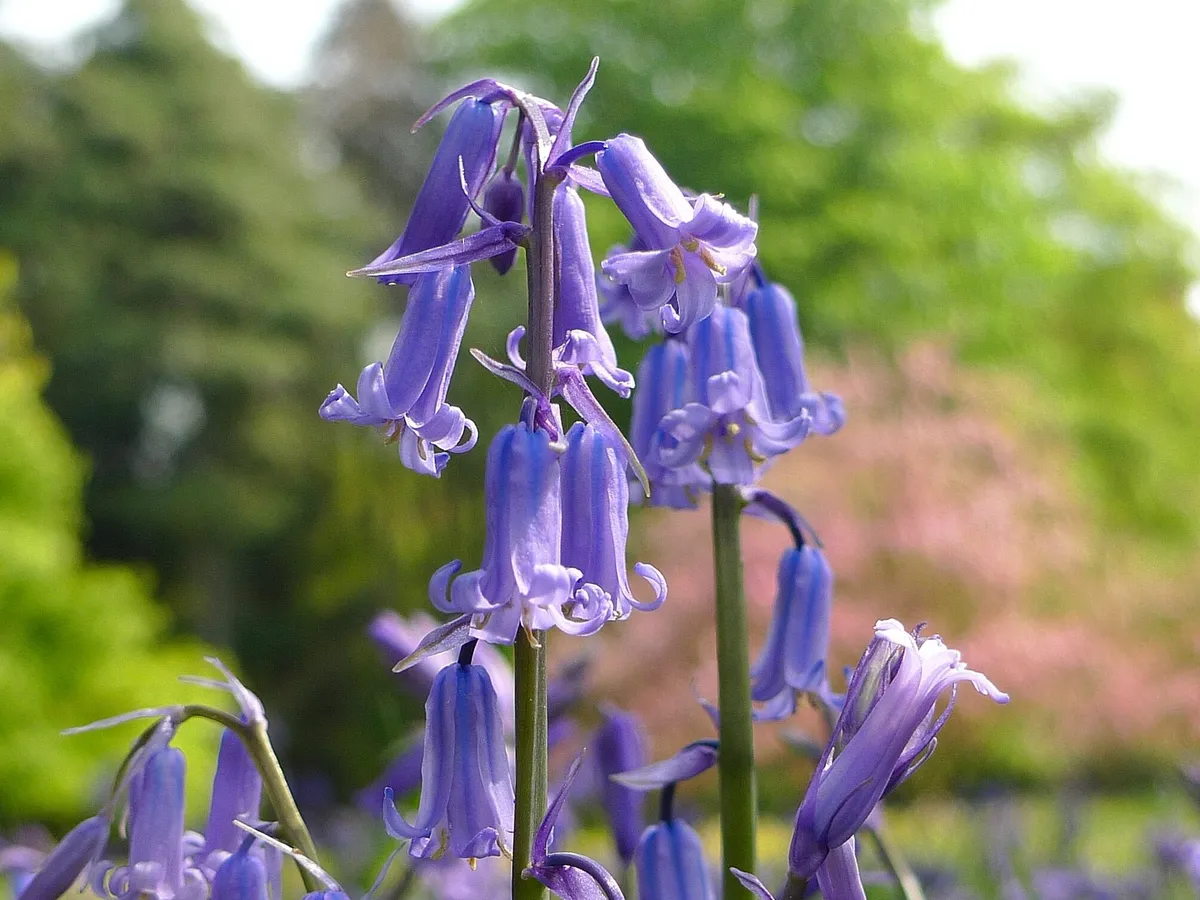Our woodlands are transformed in spring by vivid carpets of English bluebells with their deep violet-blue blooms, giving off a faint scent of honey on a warm spring day.
Over half the world’s populations of this iconic wildflower, the English bluebell, grow in the UK.
You may also like
- Everything you need to know about growing bluebells
- Where to see bluebells near you
- How to make a forest garden
- Invasive plants: here's how to avoid getting a fine
Also recommended for its wildflowers, Westonbirt, The National Arboretum is a wonderful place to visit to see bluebells at their best, to see the woodland floor filled with their captivating blue hazes in Silk Wood during late spring.
The difference between English and Spanish bluebells
The native English bluebell (Hyacinthoides non-scripta) has slender drooping stems with the flowers all on one side. The flowers are a deep violet-blue, with the petals rolled back at the tips, and white pollen and a sweet scent. And in days gone by it was not only beautiful but also useful: its sticky sap was used to stiffen Elizabethan ruffs, and as glue to bind books and set flights (feathers) in arrows. If you stumble across bluebells whilst walking through countryside, it could also be a sign that you are in a precious ancient woodland.
The English bluebell is protected under the Wildlife and Countryside Act 1981. If you dig up a wild bluebell you can be heavily fined.
The larger Spanish bluebell (Hyacinthoides hispanica) is also pretty, but can become a problem too, not just because of its spreading habit, but also due to its ability to hybridise with the native English bluebell. More vigorous than our native bluebell, the Spanish bluebell can quickly outcompete the native species for resources like light and space. Spanish bluebells, normally a garden species, are sturdier and have broad leaves, pale blue conical-bell flowers, with spreading and open tips, their paler flowers surrounding the upright stem. They have no scent and have coloured pollen.

Try to avoid growing Spanish bluebells in rural gardens
We can help protect the English bluebell by avoiding growing Spanish bluebells, particularly in rural gardens.
To source and grow bluebells in your own garden it’s quicker to start with bulbs since seeds can take 4-5 years to reach flowering size. You can buy bulbs either in spring ‘in the green’ (during active growth) when it is believed they are more likely to establish successfully, or as dry bulbs at other times of the year.
Here's more on how to grow bluebells
It is against the law to dig bluebells up from the wild, so make sure you ask your garden centre, nursery or online supplier to confirm the bulbs are cultivated and not wild collected. Also check that they are both sourced and grown in the UK as this reduces the risk of pest or diseases being imported from abroad.
Bluebells thrive when planted in partial shade, under deciduous trees or shrubs and need moist but well-drained soil and flower late-April to mid-May.
Don't miss our piece on the best places to visit bluebells





